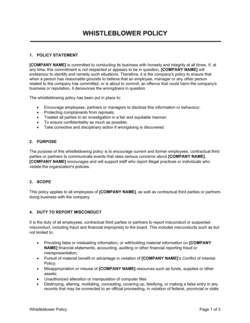Business‑in‑a‑Box helps you accomplish your most complicated tasks and projects with ease, speed and quality. Take Your Business To the Next Level. Business‑in‑a‑Box helps you make major progress at all. Onboarding in a Box Everything you need for a powerful onboarding experience Onboarding is a critical point in the talent lifecycle. A solid program not only bridges the gap between candidate. May 18, 2020 An employee handbook is a great way to help with onboarding process in your organization. A well-designed and engaging employee handbook is a brilliant touchstone for new hires and existing employees to draw information from at their own pace. Treat your handbook with the respect it deserves A handbook can be a valuable tool for your business, or it can be a source of confusion (and even litigation). Treat your handbook with the respect that it deserves as a vital communication link to your employees. Spend time developing it, update it periodically, and have it reviewed by experts.
Every business should follow a set of rules and procedures to keep operations running smoothly. As your small business grows, you will need a strong employee handbook to set expectations for employees. Knowing what to include in an employee handbook ...
Every business should follow a set of rules and procedures to keep operations running smoothly. As your small business grows, you will need a strong employee handbook to set expectations for employees. Knowing what to include in an employee handbook can help you better enforce your business’s rules and policies.
What should you include in an employee handbook?
Creating an employee handbook, or employee manual, allows you to reinforce workplace policies and employee guidelines. Your employee handbook should be simple and straightforward about expectations and employee rules. Outline policies and procedures that are relevant to your employees and business. Tweak your handbook to make it your own. Your employee handbook should specifically represent your business’s expectations. Consider covering the following while creating your employee handbook.
Welcome section
Your welcome section should give a brief introduction to your business and set the tone for the handbook. Your introduction may include your business’s history, core principles, and mission statement. Although this section is not required, it’s a good way to introduce your employee to your company.
Code of conduct
The code of conduct section is a guideline on how your employees should behave, dress, and represent your business. A code of conduct may include a variety of things such as a code of ethics, dress code, and workplace safety. Spell out what you expect from employees. For example, you may require professional business attire. List your dress code in your code of conduct section to inform employees on what is acceptable to wear to work.
Employment laws
Basic Employee Handbook Template Free
Include a section on federal, state, and local laws that your business follows. You should cover your equal employment opportunity responsibilities as well as harassment, drug, and alcohol policies.
Employee classification
There are two different types of employees: exempt and nonexempt. Your employee handbook should explain the difference between an exempt vs. nonexempt employee. Consider also explaining the difference between full-time vs. part-time employees.
Pay policies
Employees will want to know how often they are paid. Clarify how frequently you pay employees (e.g., biweekly) and how many pay periods there are per year. Be sure to mention your pay grade structure and state your overtime policy as well. You may also want to include your payment methods (e.g., check vs. direct deposit) and how employees receive their pay stubs.
Attendance
Including a section about your time and attendance policy is essential. Employees must know different rules on rest breaks, holidays, and unexcused absences.
Time off policy
Your time off policy section should go hand in hand with your attendance section. Include a paid time off (PTO) or vacation time policy in your handbook. Discuss how much PTO or vacation time is earned, PTO accrual policies, and how employees can schedule time off. Your time off policy should cover paid and unpaid time off. Include rules about other types of leave like bereavement leave, sick leave, USERRA Military Leave, and FMLA rules.
Benefits policy
Providing benefits can improve engagement and employee retention. List small business employee benefits in your handbook so employees know and understand what benefits are available to them. You might include information about health care, retirement funds, workers’ compensation, disability insurance, or employee discounts.
Discipline

Business In A Box Employee Handbook Template
You should have rules in place to fairly discipline employees. Outline how you will discipline employees by listing your different tiers of discipline. For example, the first time an employee is late for work, you may give them a warning. However, if an employee is late to work three times in one week, you may give them a strike on their record. Mention what behaviors result in certain disciplinary actions. Include behaviors that lead to termination (e.g., employee theft).
New hire and separation
Cover the basic terms on employment in a new hire and separation section. This section tells employees what to expect when they are hired or if they are terminated. Include information like waiting periods for benefits, how much notice you require if an employee quits, and termination procedures.
Acknowledgment
You should require employees to sign an acknowledgment to be sure they understand everything in your handbook. After your employee reads the handbook, have them sign the acknowledgment and return it to you. Have two copies of the acknowledgment: one for the employee and one for you. The signed acknowledgment will help you if there is ever a legal dispute.
Small Business Handbook
Mike Kappel is the CEO of Patriot Software. This article first appeared on the Patriot Payroll blog. https://www.patriotsoftware.com/payroll/training/blog